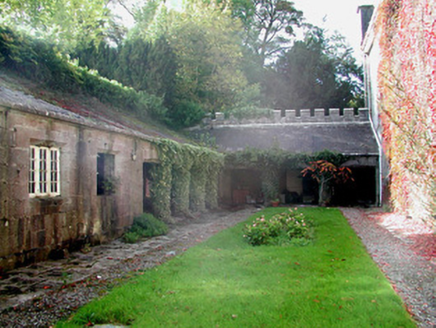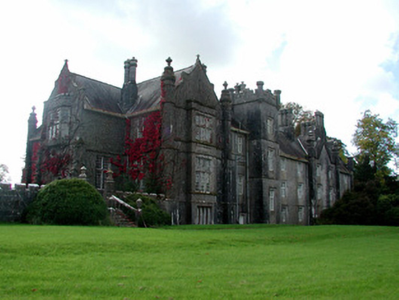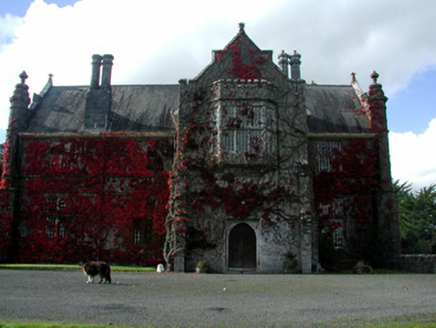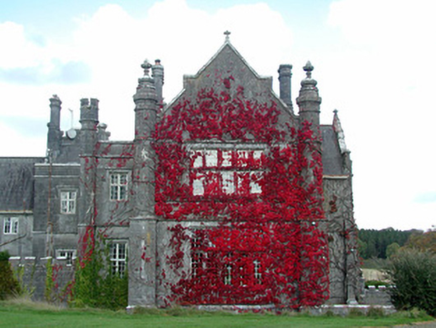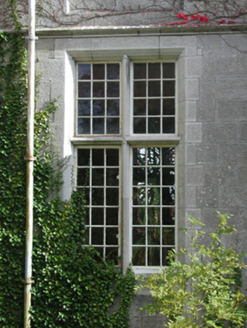Survey Data
Reg No
14909010
Rating
National
Categories of Special Interest
Archaeological, Architectural, Historical, Technical
Original Use
Country house
Date
1835 - 1845
Coordinates
231905, 230786
Date Recorded
13/10/2004
Date Updated
--/--/--
Description
Detached L-plan multiple-bay two-storey over basement Jacobean Revival style house, built between 1837-43, with breakfront tower and gable to north elevation and canted bays to eastern projecting bay and southern bay, courtyard buildings to rear. Built on the site of the eighteenth-century house and set within grounds of Durrow Abbey demesne. Pitched slate roof with ashlar limestone chimneystacks, terracotta ridge tiles and some cast-iron rainwater goods. Ashlar limestone walls with string coursing and pinnacles to angles. Variety of square-headed fenestration with some hoodmouldings and limestone transoms and mullions. Pointed-arched door opening to eastern elevation with tooled limestone surround and timber door, square-headed door opening to rear with overlight chamfered surround and hoodmoulding. Courtyard to rear with single-storey buildings, open arcading and crenellations accessed through pointed-arched door opening to west. External access to eastern façade by limestone balustraded steps and piers supporting carved stone urns. Ashlar gate piers to west. Ranges of outbuildings, gates and gate lodge associated with house.
Appraisal
Built on the former site of Durrow Abbey, this grand house dominates the grounds of the demesne which it overlooks. Superbly executed cut stonework construction to the elevations, crenellations, canted bays, pointed arches, blind niches and chimneystacks is evident. Apparently largely rebuilt in the 1920s following a fire, the interior was designed by Ralph Byrne in the Queen Anne Art Nouveau style. Blind cross niches hint to the site's history and urns to the steps are similar to those found in the eighteenth-century church doorway, suggesting these steps originate from the earlier site. When considered in conjunction with the demesne's full history and related sites, the sixth-century abbey that became the birth place of the early Medieval script, the Book of Durrow, Durrow high cross, the site of the medieval motte and Saint Columbkille's church and well, Durrow Abbey House is archaeologically and architecturally significant on a national scale.
